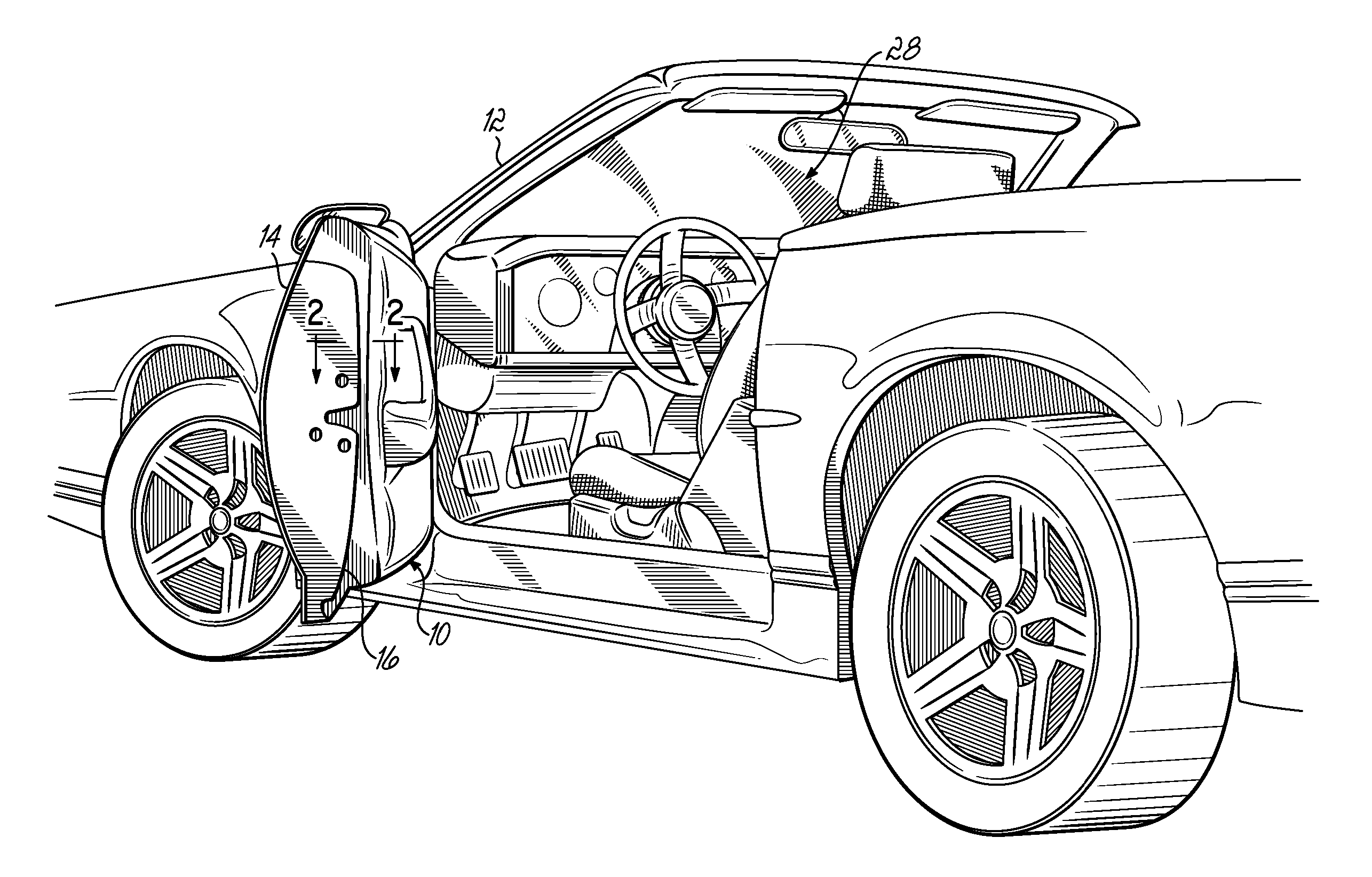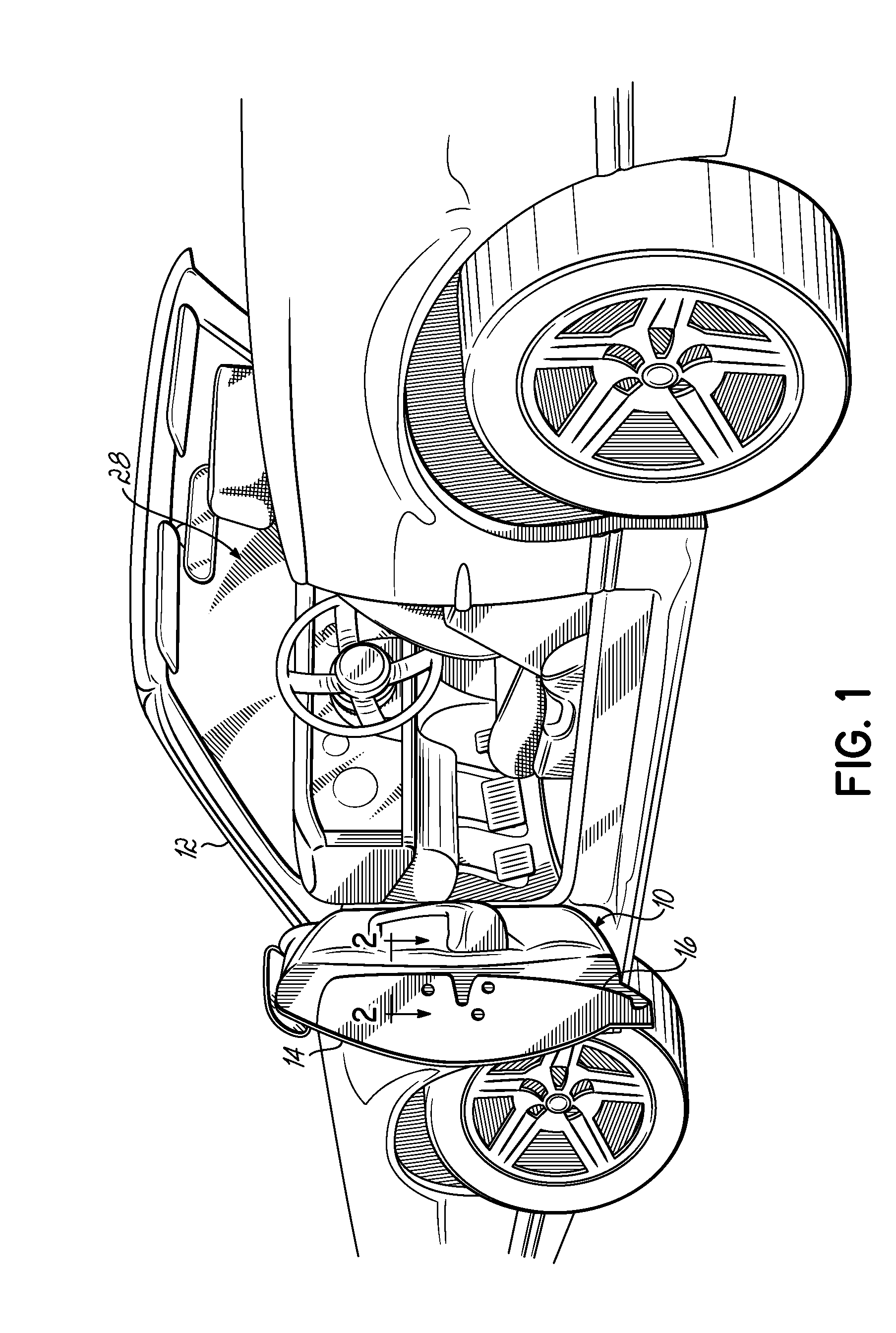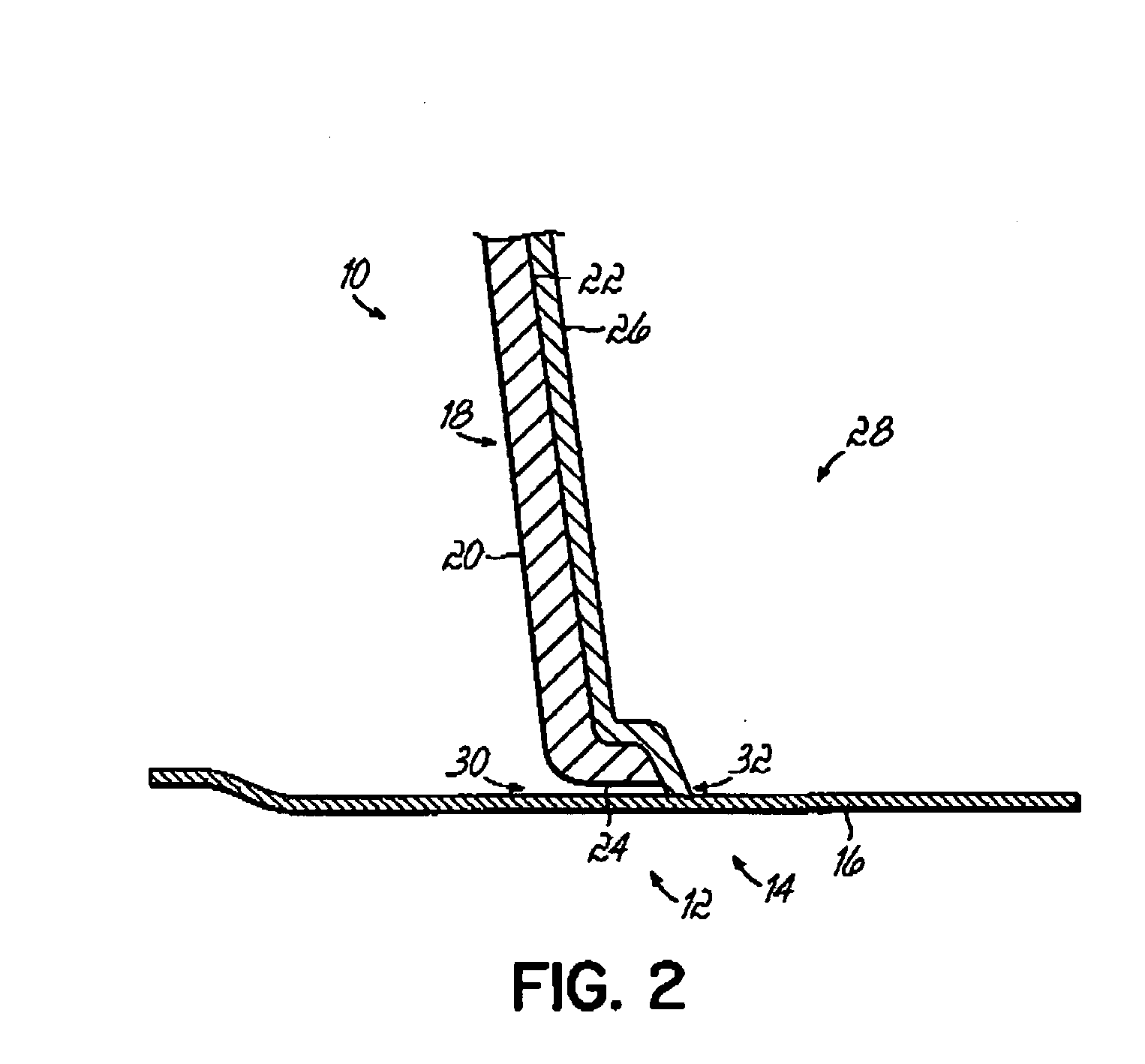Vehicle trim panel with integrated seal
a technology for vehicle trim and seal, which is applied in the direction of monocoque construction, superstructure subunits, roofs, etc., can solve the problems of common and undesirable gaps between trim panels and the vehicle body. achieve the effect of reducing the gap
- Summary
- Abstract
- Description
- Claims
- Application Information
AI Technical Summary
Benefits of technology
Problems solved by technology
Method used
Image
Examples
Embodiment Construction
[0015] Referring first to FIG. 1, a vehicle trim panel 10 constructed in accordance with one embodiment of the invention is shown fastened to a vehicle body 12. A vehicle may be, for example, an automobile, a truck, or an aircraft. More specifically, trim panel 10 is shown fastened to an inner steel sheet metal panel 16 of a door 14 of vehicle body 12. However, those of ordinary skill in the art will appreciate that trim panel 10 may be used on other parts of the vehicle body 12 such as, for example, hatches, sidewalls, etc. Further, those of ordinary skill in the art will also appreciate that vehicle body 12 may be constructed of other materials such as, for example, aluminum, or a composite such as fiberglass or carbon fiber.
[0016] Referring also to FIG. 2, vehicle trim panel 10 comprises an inner panel 18 having an inner surface 20, an outer surface 22, and a perimeter edge 24 generally extending around the inner and outer surfaces 18, 20. Specifically, inner panel 18 is configu...
PUM
 Login to View More
Login to View More Abstract
Description
Claims
Application Information
 Login to View More
Login to View More - R&D Engineer
- R&D Manager
- IP Professional
- Industry Leading Data Capabilities
- Powerful AI technology
- Patent DNA Extraction
Browse by: Latest US Patents, China's latest patents, Technical Efficacy Thesaurus, Application Domain, Technology Topic, Popular Technical Reports.
© 2024 PatSnap. All rights reserved.Legal|Privacy policy|Modern Slavery Act Transparency Statement|Sitemap|About US| Contact US: help@patsnap.com










